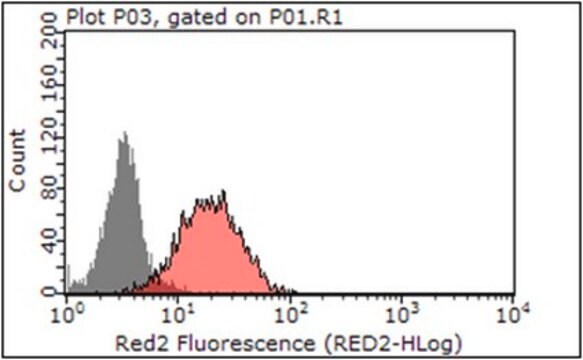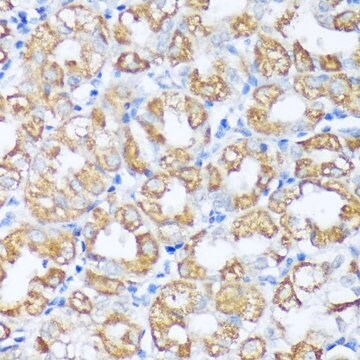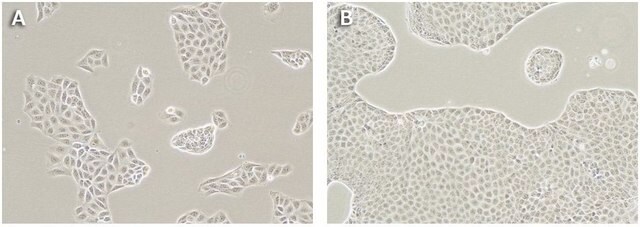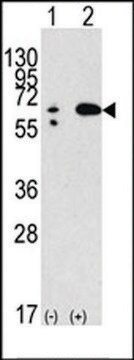SBAT06
BCRP human
membrane preparation for ATPase Assays, recombinant, expressed in baculovirus infected Sf9 cells
Synonyme(s) :
ABCG2, Breast Cancer Resistance Protein
About This Item
Produits recommandés
Produit recombinant
expressed in baculovirus infected Sf9 cells
Forme
liquid
Concentration
5 mg/mL
Couleur
off-white
Numéro d'accès UniProt
Conditions d'expédition
dry ice
Température de stockage
−70°C
Informations sur le gène
human ... ABCG2(9429)
Description générale
Application
To assess activation, ABC transporter-rich membranes are incubated with various (typically in 8) concentrations of the test article and the effect on basal ATPase activity is measured. Compounds that stimulate ATPase are generally considered substrates for the transporter. To assess inhibition, a test article′ ability to modify the activity of a given ABC transporter stimulated with its prototypical substrates is examined. The activation and inhibition tests are complementary assays.
Stimulation detected in the activation assay indicate that the compound is a transported substrate of the transporter, while interactions detected in the inhibition test indicate interaction of the test compounds with the transporter, but do not give information on the nature (substrate or inhibitor) of the interaction. In some cases inhibitors or slowly transported compounds may inhibit the baseline transporter ATPase activity as well.
Slowly transported substrates often do not stimulate the ATPase activity in a detectable extent; however the existing interaction can be identified in the inhibition assay.
Forme physique
Informations légales
Code de la classe de stockage
12 - Non Combustible Liquids
Classe de danger pour l'eau (WGK)
WGK 1
Point d'éclair (°F)
Not applicable
Point d'éclair (°C)
Not applicable
Faites votre choix parmi les versions les plus récentes :
Certificats d'analyse (COA)
It looks like we've run into a problem, but you can still download Certificates of Analysis from our Documents section.
Si vous avez besoin d'assistance, veuillez contacter Service Clients
Déjà en possession de ce produit ?
Retrouvez la documentation relative aux produits que vous avez récemment achetés dans la Bibliothèque de documents.
Notre équipe de scientifiques dispose d'une expérience dans tous les secteurs de la recherche, notamment en sciences de la vie, science des matériaux, synthèse chimique, chromatographie, analyse et dans de nombreux autres domaines..
Contacter notre Service technique








